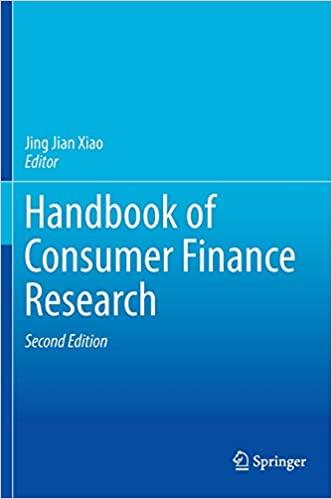Answered step by step
Verified Expert Solution
Question
1 Approved Answer
Walton just got his first job after college! He is making a budget and can afford to put $ 2 0 0 a month away
Walton just got his first job after college! He is making a budget and can afford to put $ a month away for retirement. If his goal is to retire in years with $ what annual interest rate, compounding monthly, does his retirement savings account need to have?
Use the formula fo ind solve for the
Situation
L'Dona is buying a house! How much will her monthly mortgage payment be if she is borrowing $ at interest for years?
Use the formula fo and solve for the
Situation
Charlene has retired with $ in the bank, earning annual interest, compounded quarterly. If she withdraws $ per quarter, how long until the account is empty?
Use the formula fo and solve for the
Simple Onetimerest Intere
I is the interest
is the end amount: principal plus interest
is the principal starting amount
is the interest rate in decimal form. Example:
Compound Interest
is the balance in the account after years.
is the starting balance of the account also called initial deposit, or principal
is the annual interest rate in decimal form
is the number of compounding periods in one year.
Annuity Formula
is the balance in the account after years.
is the regular deposit the amount you deposit each year, each month, etc.
is the annual interest rate in decimal form.
Annuity Formula
is the balance in the account after years.
is the regular deposit the amount you deposit each year, each month, etc.
is the annual interest rate in decimal form.
is the number of compounding periods in one year.
If the compounding frequency is not explicitly stated, assume there are the same number of compounds in a year as there are deposits made in a year.
Payout Annuity Formula
is the balance in the account at the beginning starting amount, or principal is the regular withdrawal the amount you take out each year, each month, etc. is the annual interest rate in decimal form. Example:
is the number of compounding periods in one year.
is the number of years we plan to take withdrawals
Step by Step Solution
There are 3 Steps involved in it
Step: 1

Get Instant Access to Expert-Tailored Solutions
See step-by-step solutions with expert insights and AI powered tools for academic success
Step: 2

Step: 3

Ace Your Homework with AI
Get the answers you need in no time with our AI-driven, step-by-step assistance
Get Started


